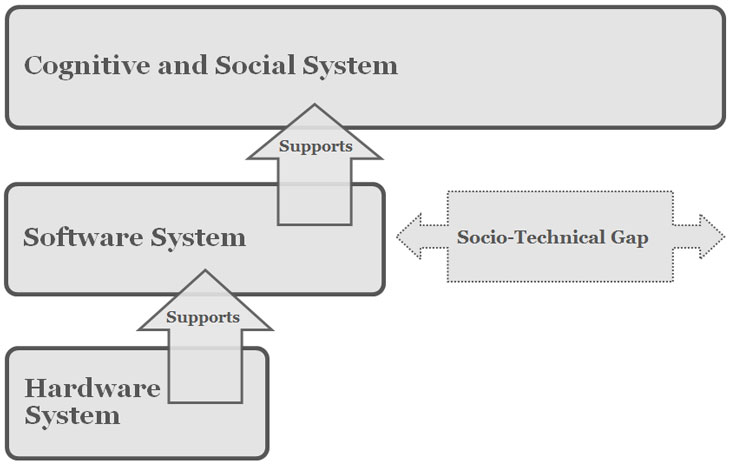
Simple technical design gives a socio-technical gap (Figure 3.1) between what the technology allows and what people want (Ackerman, 2000). For example, email technology ignored the social requirement of privacy, letting anyone email anyone without permission, and so gave spam. The technical level response to this social level problem was inbox filters. They help on a local level, but transmitted spam as a system problem has never stopped growing. User inbox spam has been held constant due to filters, but the percentage of spam transmitted by the Internet commons has never stopped growing. It grew from 20% to 40% of messages in 2002-2003 (Weiss, 2003), to 60-70% in 2004 (Boutin, 2004), to 86.2% to 86.7% of the 342 billion emails sent in 2006 (MAAWG, 2006; MessageLabs, 2006), to 87.7% in 2009 and 89.1% of all emails sent in 2010 (MessageLabs, 2010). A 2004 prediction that within a decade over 95% of all emails transmitted by the Internet will be spam is coming true (Whitworth & Whitworth, 2004). Due to spam, email users are moving to other media, but if we make the same socio-technical design error there, the problem will just follow, e.g. SPIM is instant messaging spam.
Filters see spam as a user problem but it is really a community problem — a social dilemma. Transmitted spam uses Internet storage, processing and bandwidth, whether users hiding behind their filter walls see it or not. Only socio-technology can resolve social problems like spam because in the “spam wars” technology helps both sides, e.g. image spam can bypass text filters, AI can solve Captchas, botnets can harvest web site emails, and zombie sources can send emails. Spam is not going away any time soon (Whitworth and Liu, 2009a).
Right now, aliens observing our planet might think email is built for machines, as most of the messages transmitted go from one (spam) computer to another (filter) computer, untouched by human eye. This is not just due to bad luck. A communication technology is not a Pandora’s box whose contents are unknown until opened because we built it. Spam happens when we build technologies instead of socio-technologies.